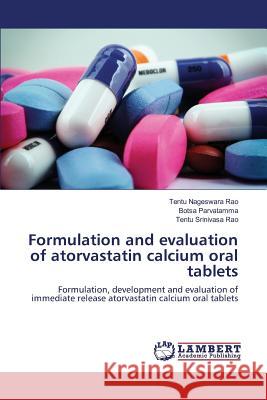Formulation and evaluation of atorvastatin calcium oral tablets » książka
Formulation and evaluation of atorvastatin calcium oral tablets
ISBN-13: 9783659817595 / Angielski / Miękka / 2016 / 112 str.
Oral drug delivery is the most desirable and preferred method of administering therapeutic agents for their systemic effects. In addition, the oral medication is generally considered as the first avenue investigated in the discovery and development of new drug entities and pharmaceutical formulations, mainly because of patient acceptance, convenience in administration, and cost-effective manufacturing process. For many drug substances, conventional immediate-release formulations provide clinically effective therapy while maintaining the required balance of pharmacokinetic and pharmacodynamic profiles with an acceptable level of safety to the patient. Since time immemorial, oral drug administration has been one of the most convenient and widely accepted routes of delivery for most therapeutic agents. Traditionally, oral dosage forms refer to tablets, capsules, and liquid preparations taken orally, swallowed, and transiting the gastrointestinal tract (GIT) for postbuccal absorption. However, some undesirable physiological properties of the Gastrointestinal (GI) tract limit the feasibility of administration of some molecules by this route (i.e., proteins, polypeptides, etc.).
Oral drug delivery is the most desirable and preferred method of administering therapeutic agents for their systemic effects. In addition, the oral medication is generally considered as the first avenue investigated in the discovery and development of new drug entities and pharmaceutical formulations, mainly because of patient acceptance, convenience in administration, and cost-effective manufacturing process. For many drug substances, conventional immediate-release formulations provide clinically effective therapy while maintaining the required balance of pharmacokinetic and pharmacodynamic profiles with an acceptable level of safety to the patient. Since time immemorial, oral drug administration has been one of the most convenient and widely accepted routes of delivery for most therapeutic agents. Traditionally, oral dosage forms refer to tablets, capsules, and liquid preparations taken orally, swallowed, and transiting the gastrointestinal tract (GIT) for postbuccal absorption. However, some undesirable physiological properties of the Gastrointestinal (GI) tract limit the feasibility of administration of some molecules by this route (i.e., proteins, polypeptides, etc.).











